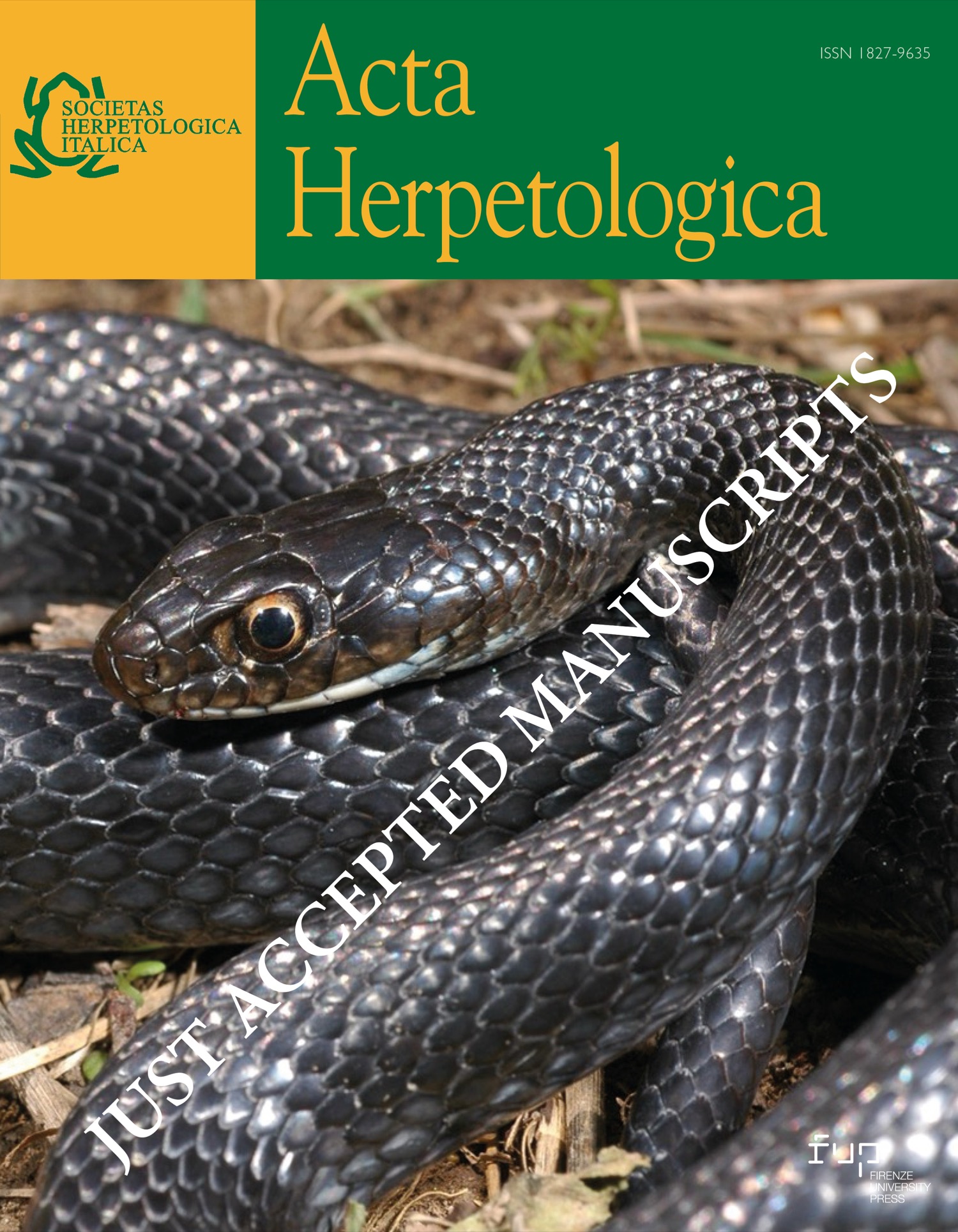Linear morphological traits of 7 Italian and 2 Corsican populations of the Italian Wall Lizard, Podarcis siculus campestris
Published 2025-10-21
How to Cite
Copyright (c) 2025 Vasco Avramo, Gabriele Senczuk, Claudia Corti, Paolo Colangelo

This work is licensed under a Creative Commons Attribution 4.0 International License.
Abstract
The dataset comprises geographical coordinates and linear morphological traits of seven Italian and two Corsican populations of Podarcis siculus campestris. Monitoring activities were conducted throughout the warm season of 2019, from April to September. Individuals were captured using the looping technique, and morphological measurements were taken in situ with an electronic caliper. All animals were released unharmed after handling. Each population includes a minimum of five individuals per sex to account for sexual dimorphism, and no population is sexually unbalanced. Morphological traits were recorded on the head (5 measurements), body (2 measurements), and both fore and hind limbs (4 measurements). Italian populations were sampled along a latitudinal gradient on the Adriatic coast, ranging from the southernmost population in Salve (LE) to the northernmost known non-introduced population in Malpensa (MI). The two Corsican populations were sampled along the eastern coastline. Except for Malpensa (shrubs and mixed forest), all populations were sampled in dune habitats.
References
- Corti, C., Capula, M., Luiselli, L., Razzetti, E., Sindaco, R. (2011): Reptilia. Fauna d’Italia, Vol. 45. Calderini, Bologna. XII + 869 pp.





